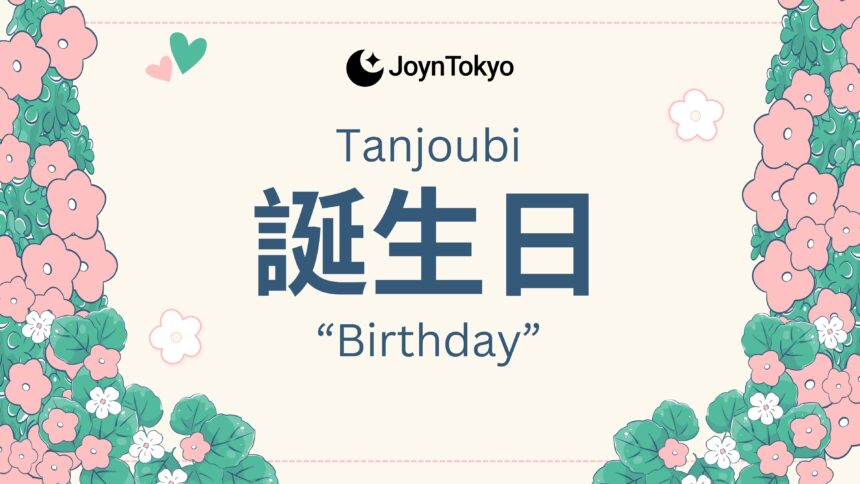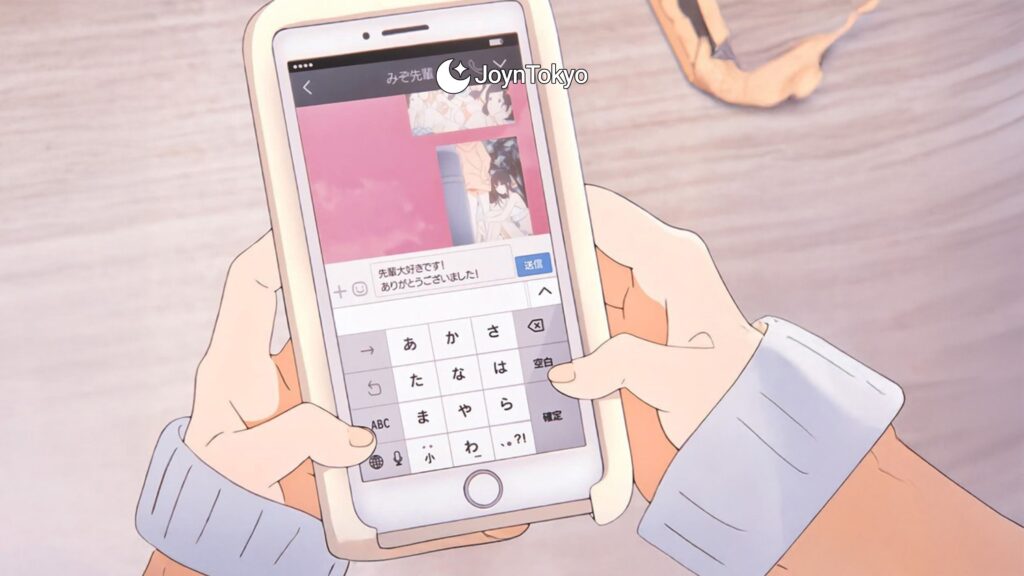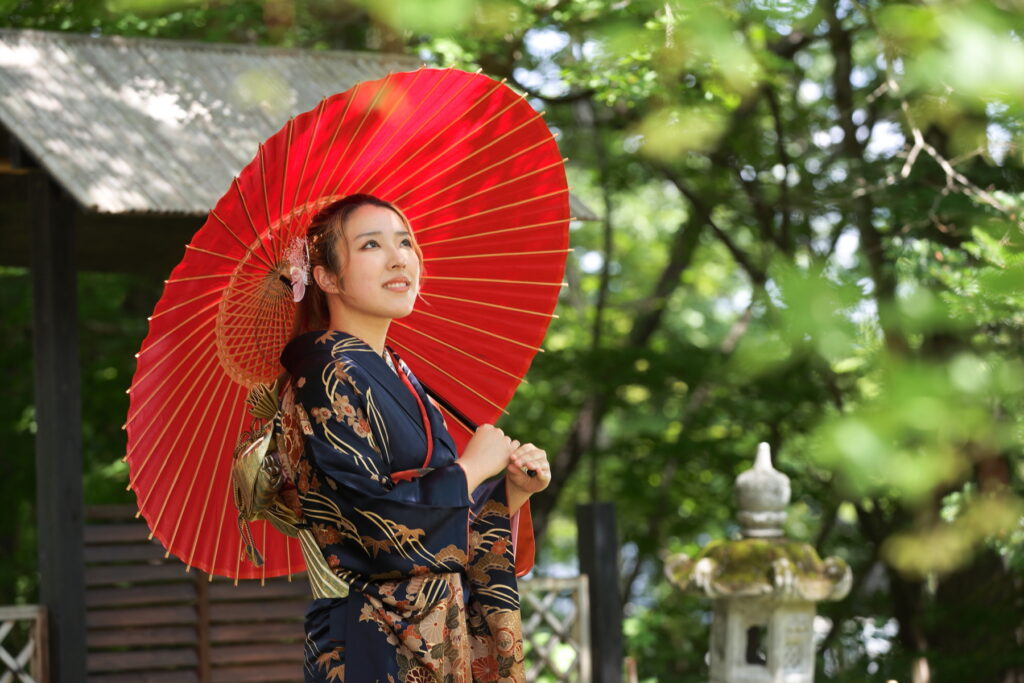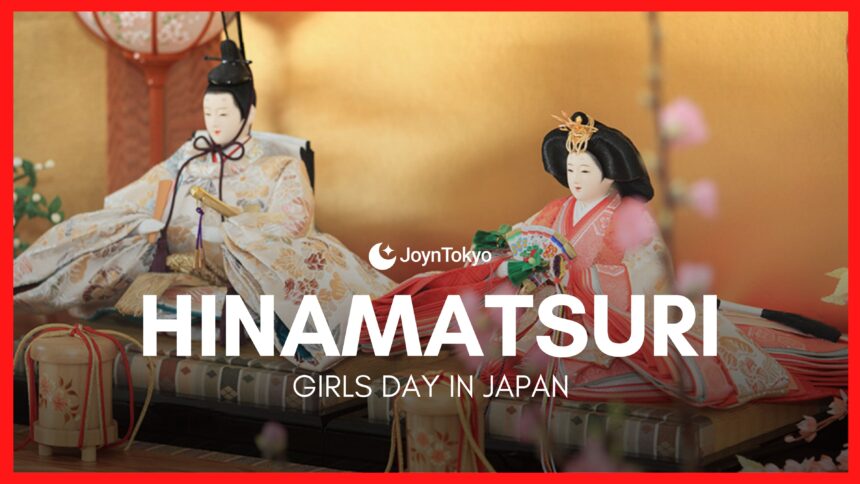Birthdays in Japan are celebrated with warmth and sincerity, yet the language and customs surrounding them can feel different from what you may be used to. If you are learning Japanese or planning to wish a Japanese friend a happy birthday, knowing the correct phrases and cultural context helps you express your message naturally. This guide explains how to say and write happy birthday in Japanese, and also highlights some etiquette that makes your greeting more thoughtful.
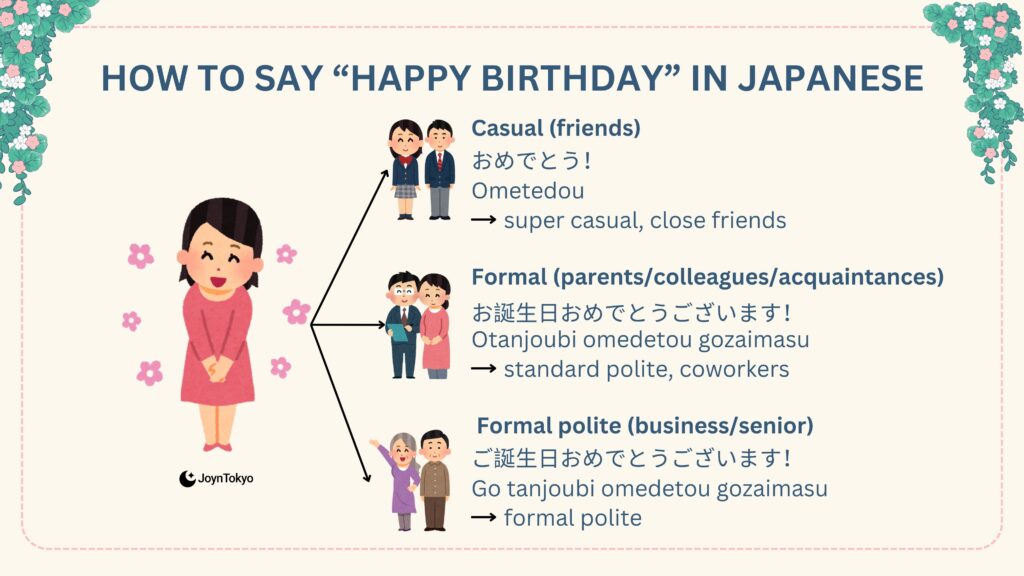
Casual Ways to Say Happy Birthday in Japanese
When speaking to close friends, siblings, or people your own age, casual expressions feel natural and warm. These greetings are commonly used in everyday conversation or text messages:
- Tanjoubi omedetou (誕生日おめでとう) – the standard casual way to say “happy birthday.”
- Omedetou (おめでとう) – a shortened form, often used in friendly chats or social media posts.
These versions are friendly and approachable, but they should not be used in professional or highly respectful contexts. Their charm lies in their simplicity and closeness.
Polite Ways to Say Happy Birthday in Japanese
In many cases, especially when addressing acquaintances, coworkers, or relatives outside your immediate family, a more polite form is expected. This version balances warmth with cultural respect:
- Otanjoubi omedetou gozaimasu (お誕生日おめでとうございます) – the polite and widely accepted phrase for most situations.
Using this phrase shows consideration for the relationship and ensures that your message is appropriate. It is suitable for professional settings, for teachers, and for senior relatives.
Formal and Respectful Ways to Say Happy Birthday in Japanese
When the situation requires the highest level of formality, such as addressing a company superior, a teacher you deeply respect, or an elder relative, it is best to use a more elaborate expression:
- Otanjoubi makoto ni omedetou gozaimasu (お誕生日誠におめでとうございます) – a very formal and respectful version, often used in writing or ceremonial greetings.
While less common in everyday speech, this phrasing conveys the utmost respect and is appreciated in professional correspondence or traditional settings.
How to Write Happy Birthday in Japanese
When writing birthday wishes, the most common form is tanjoubi omedetou (誕生日おめでとう), though you may also write tanjoubi omedetou (たんじょうびおめでとう) in hiragana, especially for children or beginner learners. In formal cards or letters, adding the recipient’s name with a polite suffix personalizes the message, for example:
Yamada-san, otanjoubi omedetou gozaimasu (山田さん、お誕生日おめでとうございます), which translates to Yamada-san, otanjoubi omedetou gozaimasu (やまださん、おたんじょうびおめでとうございます).
Younger generations may decorate written messages with emojis, while older generations often prefer simple, respectful text.
Cultural Etiquette for Birthdays in Japan
In Japan, birthday celebrations tend to be smaller and more intimate compared to Western traditions. Children may enjoy parties with classmates, but adults usually celebrate quietly with close family or friends. Gift-giving is a central part of the custom, and presentation is highly valued. A modest yet neatly wrapped gift, paired with a handwritten card, shows thoughtfulness. When offering birthday greetings in person, a polite bow adds sincerity and reinforces cultural respect.
Common Additions to Birthday Messages
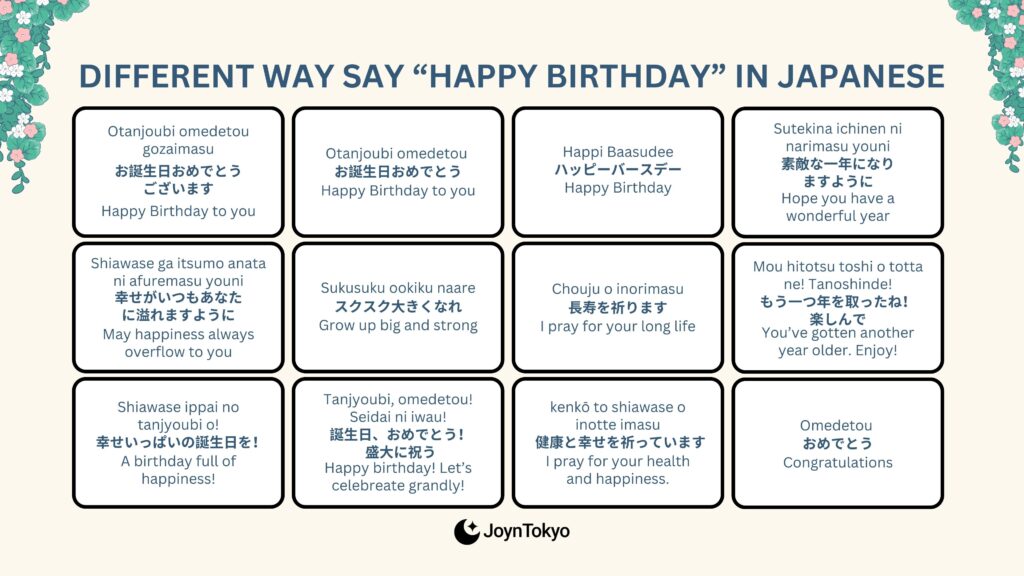
Many Japanese birthday greetings go beyond a simple “happy birthday” by including well-wishes for the year ahead. Popular expressions include:
- Suteki na ichinen ni narimasu you ni (素敵な一年になりますように) – “I hope you have a wonderful year.”
- Kkenkou to shiawase o inotte imasu (健康と幸せを祈っています) – “I pray for your health and happiness.”
These additions enrich your greeting and reflect the Japanese emphasis on harmony, well-being, and positive relationships.
How to Type Happy Birthday in Japanese
Typing birthday greetings is straightforward once your device is set up with a Japanese input system. Writing tanjoubi omedetou will convert into 誕生日おめでとう, while beginners often start with hiragana input. On social media, people frequently add kaomoji such as (^▽^) or (≧◡≦) to make their digital messages cheerful and friendly. These playful touches are especially popular among younger generations and help convey warmth in online communication.
Learn how to type in Japanese!

